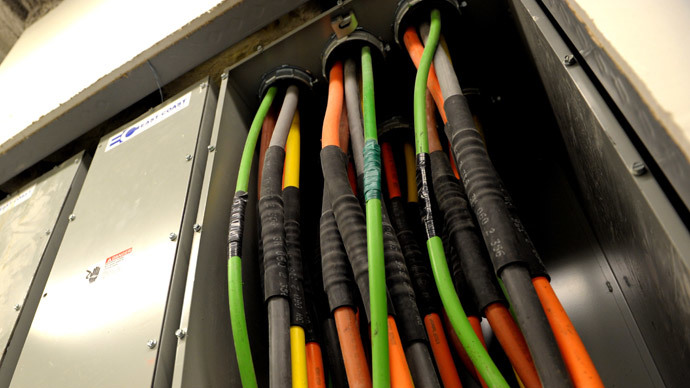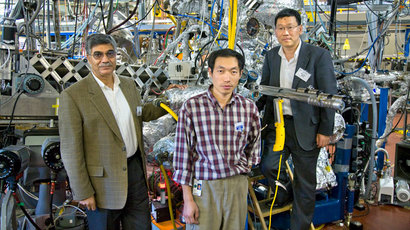World on a string: Breakthrough fiberoptic cable 2,500X faster than fastest internet

Imagine downloading your favorite flick in 31 thousandths of a second. Such insane internet speeds are now a reality, with researchers rolling out a 255 terabits per second fiberoptic network which could transport the entire Internet on a single cable.
The cable, the joint effort of Dutch and US scientists, is 2,550 times faster than the fastest single-fiber links in commercial operation today.
In real terms, it could transfer a 1 GB movie in 0.03 milliseconds or the entire contents of your 1 terabit hard drive in about 31 milliseconds.
At this speed, a single fiber optic cable could theoretically carry the all the data on the internet at peak times.
But how does it work?
Researchers from Eindhoven University of Technology and the University of Central Florida employed a well-known but still cost-prohibitive technology; multi-mode fiber.
Normal fibre optic cables contain thousands of strands of glass or plastic fibre which are slightly thicker than the thread of a needle. These fibers can, in essence, only carry the light for a single laser.
The multi-mode fiber used by the researchers in contrast, has seven distinct cores in a hexagonal shape which are able to carry just as many distinct signals at one time. What’s more, they are squeezed down into the size of the same kind of fiber optic cables used to support the current transatlantic internet cables.

In layman’s terms, it is something akin to a one way road being stretched out into a seven lane highway. This seven lane highway is then stretched into a multi-tier freeway, much like the so-called LA 'Stack'. Except in this case, it’s like a seven lane, multi-story drag race, with all the power from the individual vehicles being directed into a single source.
Researchers said that this new type of optical fibre is like "allowing 21 times more bandwidth than currently available in communication networks," which is 4-8 Terabits per second standard.
Moreover, the researchers have introduced "two additional orthogonal dimensions for data transportation - as if three cars can drive on top of each other in the same lane."
In their test, the researchers managed to reach speeds of 5.1 terabits for each of the seven carriers. Then, by using wavelength division multiplexing (WDM), which allows a number of optical carrier signals onto a single optical wire, they managed to cram 50 carriers down the seven cores, reaching the massive 255 terabit per second speed.
Measuring less than 200 microns in diameter, the new fiber does not take noticeably more space than conventional fibres already deployed, Dr. Chigo Okonkwo who led the work explained.
“These remarkable results, supported by the European Union Framework 7, MODEGAP, definitely give the possibility to achieve petabits per second transmission, which is the focus of the European Commission in the coming seven-year Horizon 2020 research program,” Okonkwo said.
Research results were recently published in the journal Nature Photonics.
While the technology for multi-mode fiber is in place, the price tag on replacing the millions of miles of existing cables could put the upgrade off for decades.
But with the mind-blistering implications of a world wide web operating at thousands of times its current maximum speed, the cost of holding off on the upgrade for too long may be incalculable.














